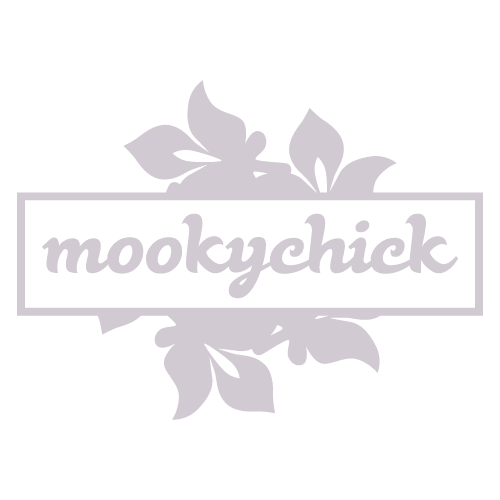What chemicals are in food

Non-organic food: Today, ‘food’ (note the quotes) contains bizarre concoctions dreamed up by labcoated alchemists known as ‘flavourists’. Additives with names like Blue 1. Curiouser and curiouser…
If you are what you eat, then I’m having an identity crisis.
Natural and artifical flavours. High fructose corn syrups. Blue 1. Sound familiar? Phrases like these appear on the ingrediant list of all sorts of food packagaings. They’re so common that, perhaps, we’ve been lulled into a sense of complacency. But take a moment to think about it. Natural and artifical flavours. What the heck does that really mean? Little to nothing, if you ask me. And this ‘Blue 1, Red 50’ business what’s that about? Last time I checked, ‘blue’ wasn’t a food. So, why am I (and maybe you?) putting these things in my body if I haven’t the foggiest as to what they are?
Well, the Government in the United States, the Food and Drug Administration [FDA] wouldn’t let food be sold if it had dangerous chemicals, right? In theory, yes. But I’d rather figure out what exactly these ‘additives’ are myself, thanks. Let’s go!
Natural and artificial flavours:
This one is so vague, it gets me thinking conspiracy theories. That might be justified the flavours put into food ‘products’ are considred ‘top secret’ since flavouring is a key ingredient in differentiating similar products, like crackers or yoghurts. The FDA therefore allows companies to not disclose ingredients so long as they are Generally Regarded as Safe. To quote Othello, I like not that. But tragedy came to Othello by jumping to conclusions, so let’s carry on with the fact-finding.
What’s the difference between artifical and natural flavours? Natural flavours make me think of fresh-squeezed orange juice going into my orange sherbet; articifal flavours make me think of clockwork oranges. That, however, couldn’t be further from the truth. Both natural and artifical flavours come from laboratories where they are made by flavourists. The flavourist works with over thousands of molecular compounds to create a specific and consistant taste. The only difference between ‘natural’ and ‘artifical’ flavours is the source from which the compounds come. Natural flavours come from natural origins; artificial flavours are synthesized. But both are more or less the same chemical compound. (And sometimes the artifical compound is actually more eco-friendly!)
So is flavouring safe? Depends whom you ask. The FDA webpage (http://www.fda.gov/food/foodingredientspackaging/ucm094211.htm) gives the impression that there’s no need to worry. Yet fearmongering articles on the secret flavouring poisons abound, as well…
Perhaps more conclusive conclusions can be reached on food dye:
Why dye food? What’s wrong with the natural colour?
Creating a colour to add to taste – in their natural state, maraschino cherries are beige; we percieve a more vibrant taste when they are given a more vibrant colour.
Masking natural variations in the colour such as in oranges and salmon
Protecting vitamins from damage by light vitamin B6, for example, is necessary for protein and red blood cell metabolism, and quite light sensitive.
And, of course, decorative and artistic functions like icing cupcakes.
Fair enough. The question is, though, with what are we dying our food? The FDA has a list of the approved food dyes:
- * FD&C Blue No. 1 Brilliant Blue FCF, E133 (Blue shade)
- * FD&C Blue No. 2 Indigotine, E132 (Dark Blue shade)
- * FD&C Green No. 3 Fast Green FCF, E143 (Turquoise shade)
- * FD&C Red No. 40 Allura Red AC, E129 (Red shade)
- * FD&C Red No. 3 Erythrosine, E127 (Pink shade, commonly used in glacé cherries) [4]
- * FD&C Yellow No. 5 Tartrazine, E102 (Yellow shade)
- * FD&C Yellow No. 6 Sunset Yellow FCF, E110 (Orange shade)
The above are known as primary colours; when they are mixed to produce other colours, those colours are then known as secondary colours.
The current ‘official’ statement from the National Insitutes of Health is that colour additives do not cause hyperactivity, which had been the subject of much debate and experimentation; the European Food Safety Authority [EFSA] more or less agreed, stating that the studies which idicted the ideas provided only limited evidence for a small but statistically significant effect.
However, global agreement or even agreement in the Western hemisphere has yet to be reached.
Allura Red AC – previously manufactured from coal tar, but now largely made from petroleum though approved, is not recommended for conssumption by the European Union and banned in Denmark, Belgium, France, Switzerland, and Sweden. Ironically, it is commonly used to colour children’s medicines in the United States.
Sunset Yellow FCF is also banned in Norway and Finland.
Fast Green FCF is noted for poor intestinal absorption, and its negative effects (irritation of eyes, skin, digestive tract, and respiratory tract) on laborartory dogs, rats and mice. It, too, is not allowed by the EFSA.
Additionally, UK ministers agreed to remove six dyes used in Britain by 2009 –
- * Sunset yellow (E110) (FD&C Yellow #6) – colouring found in squashes
- * Carmoisine (E122) – Red colouring in jellies
- * Tartrazine (E102) (FD&C Yellow #5) – Yellow colouring
- * Ponceau 4R (E124) – Red colouring
- * Sodium benzoate (E211) – Preservative
- * Quinoline yellow (E104) – Food colouring
- * Allura red AC (E129) (FD&C Red #40) – Orange / red food dye
For us Americans, that’s not very reassuring.
Then add the terror of high fructose corn syrup (which, though not conclusively harmful, requires far more manufcaturing and processing than honey, cane sugar and other natural occuring sweeteners); preservatives (it’s solidly fiction that our corpses take longer to decay but still…) and aspertine addictions.
In the face of all these mixed-up opinions, government policies and chemical compounds, what’s a girl to do?
What about: running away from it all and going organic?
